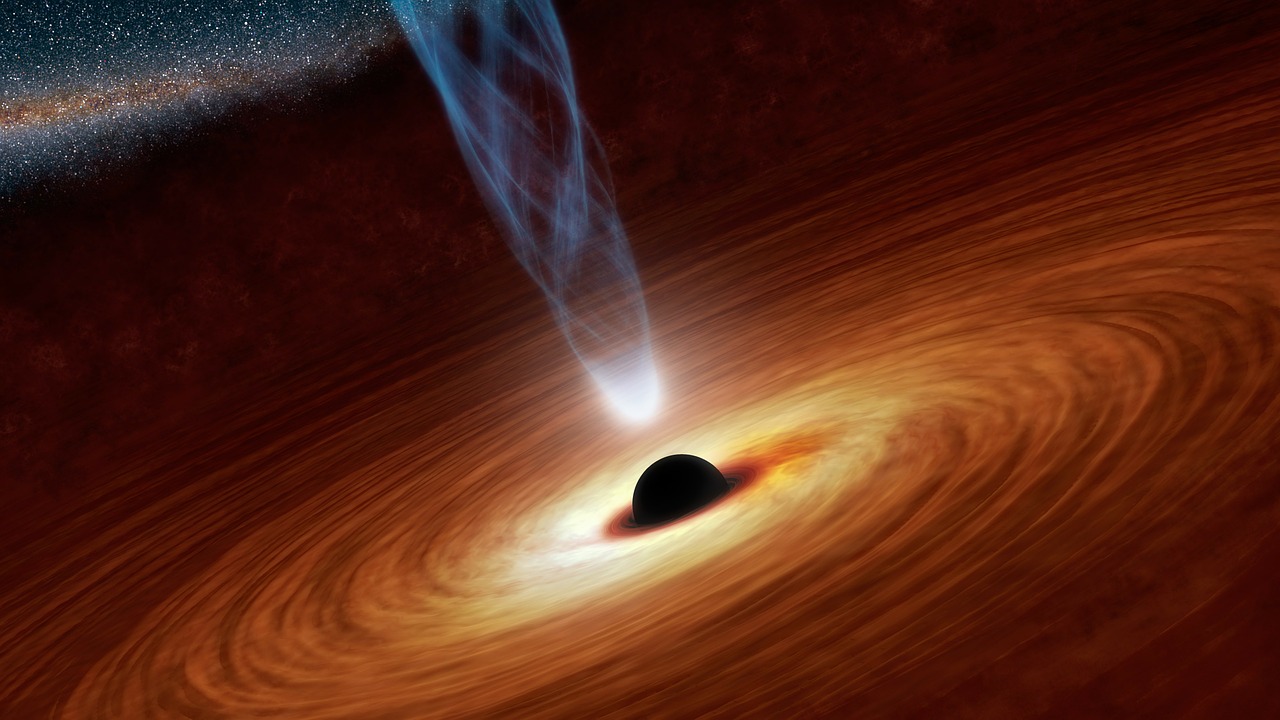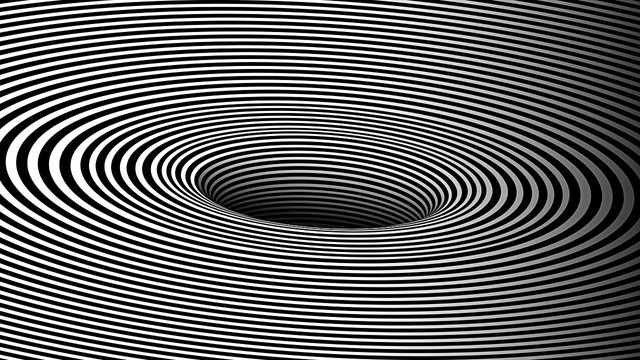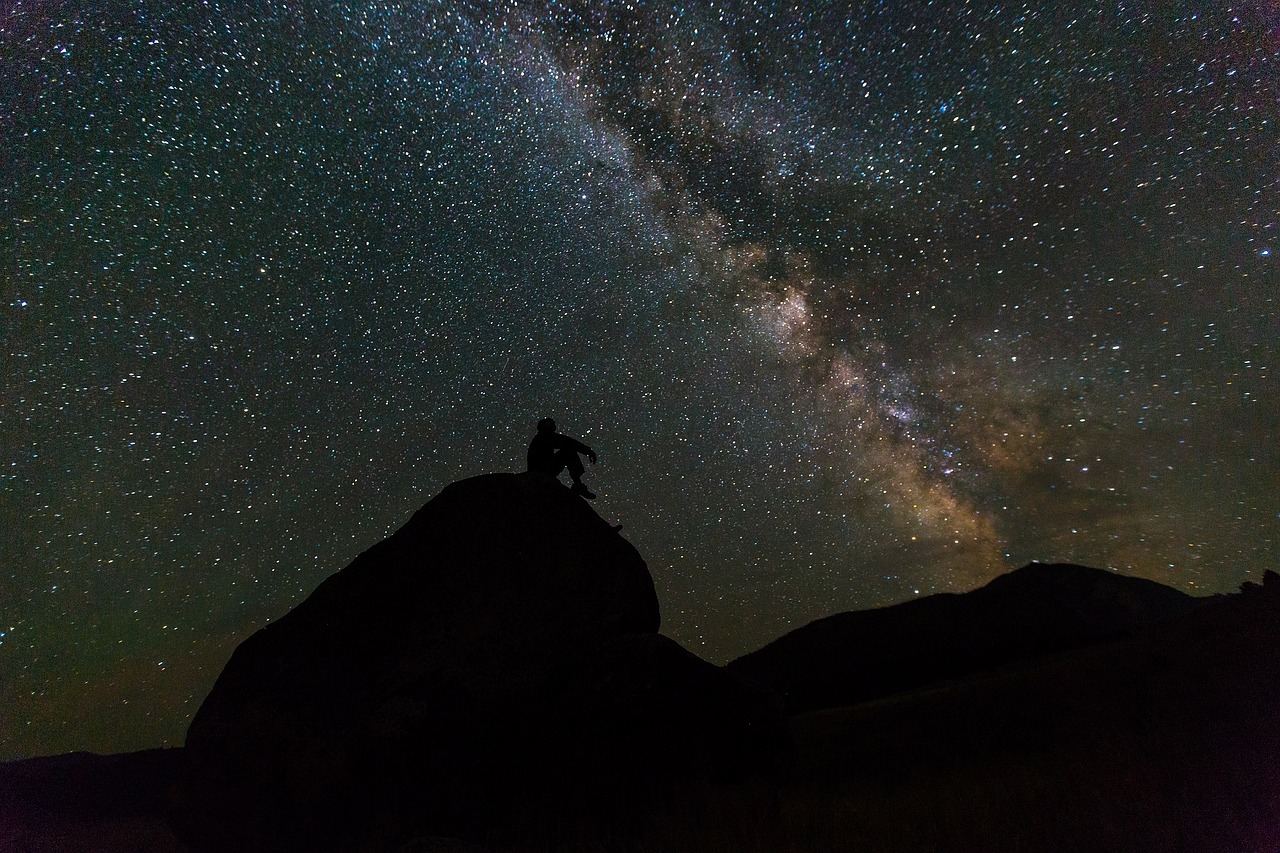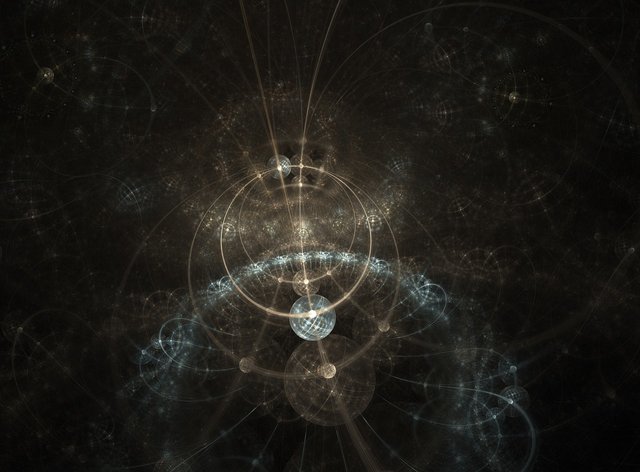Black Holes : the science between
Black hole
A black hole is a region of spacetime exhibiting such strong gravitational effects that nothing—not even particles and electromagnetic radiation such as light—can escape from inside it. read more
A black hole is a place in space where gravity pulls so much that even light can not get out. The gravity is so strong because matter has been squeezed into a tiny space. This can happen when a star is dying.
Because no light can get out, people can't see black holes. They are invisible. Space telescopes with special tools can help find black holes. The special tools can see how stars that are very close to black holes act differently than other stars. content source
How is a black hole created?
A common type of black hole is produced by certain dying stars. A star with a mass greater than about 20 times the mass of our Sun may produce a black hole at the end of its life.
In the normal life of a star there is a constant tug of war between gravity pulling in and pressure pushing out. Nuclear reactions in the core of the star produce enough energy and pressure to push outward. For most of a star’s life, gravity and pressure balance each other exactly, and so the star is stable. **However, when a star runs out of nuclear fuel, gravity gets the upper hand and the material in the core is compressed even further. The more massive the core of the star, the greater the force of gravity that compresses the material, collapsing it under its own weight.
source
we can say with out the death of a star there is no black hole
Death of stars
For us to be able to completely understand black holes we have to understand the death of stars
understanding the death of stars , the death. stars are usually classified according. their size
Stars Like the Sun
When the core runs out of hydrogen fuel, it will contract under the weight of gravity. However, some hydrogen fusion will occur in the upper layers. As the core contracts, it heats up. This heats the upper layers, causing them to expand. As the outer layers expand, the radius of the star will increase and it will become a red giant. The radius of the red giant sun will be just beyond Earth's orbit. At some point after this, the core will become hot enough to cause the helium to fuse into carbon. When the helium fuel runs out, the core will expand and cool. The upper layers will expand and eject material that will collect around the dying star to form a planetary nebula. Finally, the core will cool into a white dwarf and then eventually into a black dwarf. This entire process will take a few billion years source
##Stars More Massive Than the Sun
When the core runs out of hydrogen, these stars fuse helium into carbon just like the sun. However, after the helium is gone, their mass is enough to fuse carbon into heavier elements such as oxygen, neon, silicon, magnesium, sulfur and iron. Once the core has turned to iron, it can burn no longer. The star collapses by its own gravity and the iron core heats up. The core becomes so tightly packed that protons and electrons merge to form neutrons.
In less than a second, the iron core, which is about the size of Earth, shrinks to a neutron core with a radius of about 6 miles (10 kilometers). The outer layers of the star fall inward on the neutron core, thereby crushing it further.
The core heats to billions of degrees and explodes (supernova), thereby releasing large amounts of energy and material into space. The shock wave from the supernova can initiate star formation in other interstellar clouds. The remains of the core can form a neutron star or a black hole depending upon the mass of the original star.source
we can say with out the death of a star there is no black hole
Black hole classifications (from Wikipedia)
| Class | Approx.mass | Approx.size |
|---|---|---|
| Supermassive black hole | 10^5–10^10MSun | 0.001–400 AU |
| Intermediate-mass black hole | 10^3 MSun | 10^3 km ≈ REarth |
| Stellar black hole | 10 MSun | 30 km |
| Micro black hole | up to MMoon | up to 0.1 mm |
(advisable to check the contents source for exact numbering)
What happens when you fall into a black hole
check it out in the next post
Thanks for your time
References
https://en.m.wikipedia.org/wiki/Black_hole
https://www.nasa.gov/audience/forstudents/k-4/stories/nasa-knows/what-is-a-black-hole-k4.html
http://hubblesite.org/reference_desk/faq/answer.php.id=56&cat=exotic
https://www.google.com.ng/amp/s/science.howstuffworks.com/amp/star6.htm




